From AI-powered personalization to blockchain-secured transactions, the future of e-commerce promises more seamless, secure, and engaging shopping experiences. Businesses that adapt to these changes now will position themselves for success in an increasingly competitive digital marketplace.
AI-Driven Personalization: The New Standard
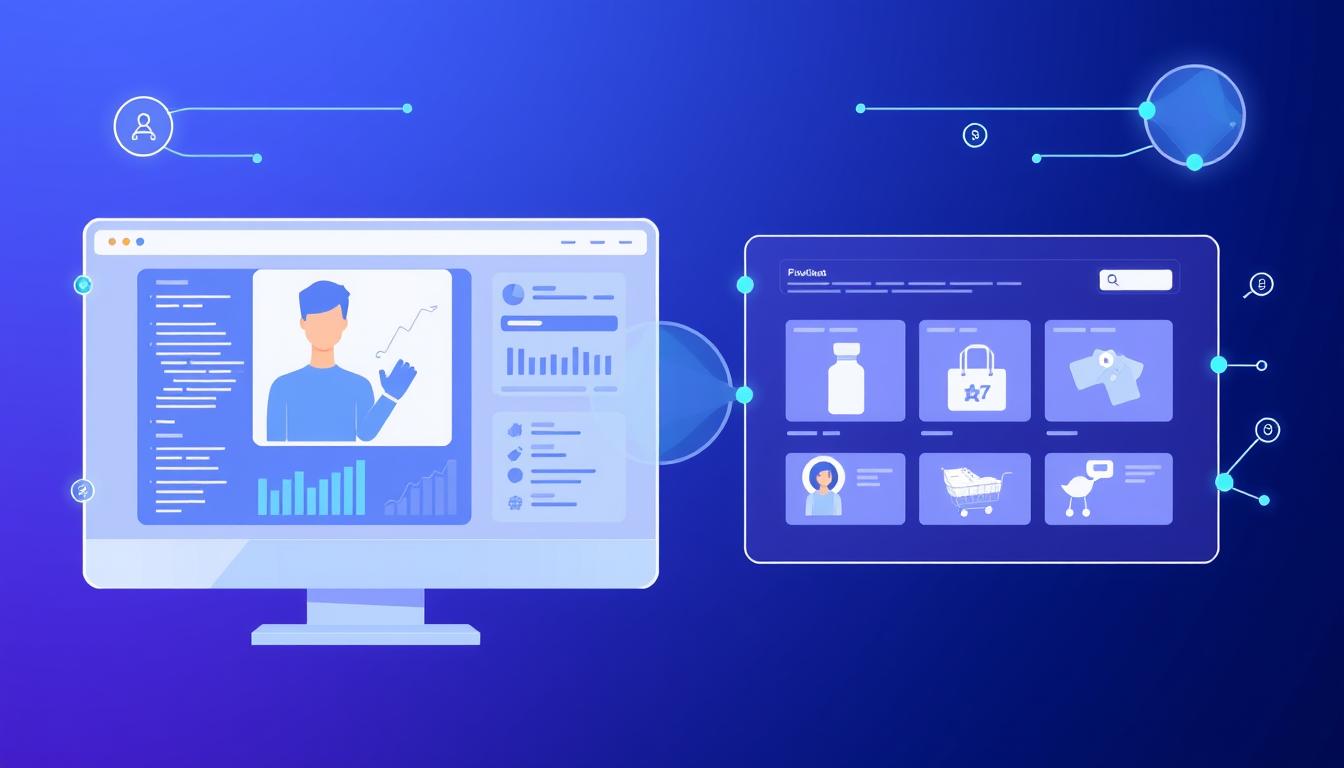
AI systems in 2025 will create hyper-personalized shopping experiences based on comprehensive customer data analysis
Artificial intelligence will transform from a competitive advantage to a basic requirement for e-commerce businesses by 2025. As AI technology advances, it will increasingly enable companies to personalize products, content, and promotions for each individual customer.
According to recent research, 67% of consumers already expect personalized interactions while shopping online. By 2025, this expectation will be universal, with AI systems capable of analyzing vast amounts of data to predict customer needs before they even express them.
How AI Will Transform Customer Experiences
- Predictive product recommendations based on browsing history, purchase patterns, and even contextual factors like weather and local events
- Dynamic pricing strategies that optimize offers based on customer value, inventory levels, and competitive positioning
- Personalized site layouts and navigation paths that adapt to individual shopping preferences
- AI-powered visual search allowing customers to find products by uploading images
- Automated content generation for product descriptions and marketing materials
Troy Cox, Senior Vice President of Product at BigCommerce, predicts: "Within e-commerce, Generative AI will supercharge search by increasing context and providing more relevant results. It will also strengthen natural language chat services, aiding in answering questions, providing support, and helping buyers find relevant products and services."
AR and VR: Bringing the In-Store Experience Online

One of the greatest challenges of online shopping has always been the inability to physically interact with products before purchasing. By 2025, augmented reality (AR) and virtual reality (VR) will bridge this gap, creating immersive shopping experiences that rival or even surpass in-store interactions.
According to eMarketer, the number of AR users in the US will exceed 100 million by the end of 2025, representing 32% of the population. This widespread adoption will make AR a standard feature in e-commerce rather than a novelty.
Immersive Shopping Applications
Augmented Reality
- Virtual try-ons for clothing, accessories, and cosmetics
- Furniture and home décor visualization in actual living spaces
- Interactive product demonstrations showing features and benefits
- Size and fit visualization to reduce returns
Virtual Reality
- Virtual showrooms and stores with complete product catalogs
- Immersive brand experiences and storytelling
- Social shopping with friends in virtual environments
- Virtual consultations with product experts
By 2025, these technologies will be fully integrated into mobile shopping apps and websites, making them accessible to mainstream consumers without specialized equipment. Retailers that fail to implement these immersive experiences risk falling behind as consumers gravitate toward more engaging shopping environments.
Blockchain: Creating Security and Transparency
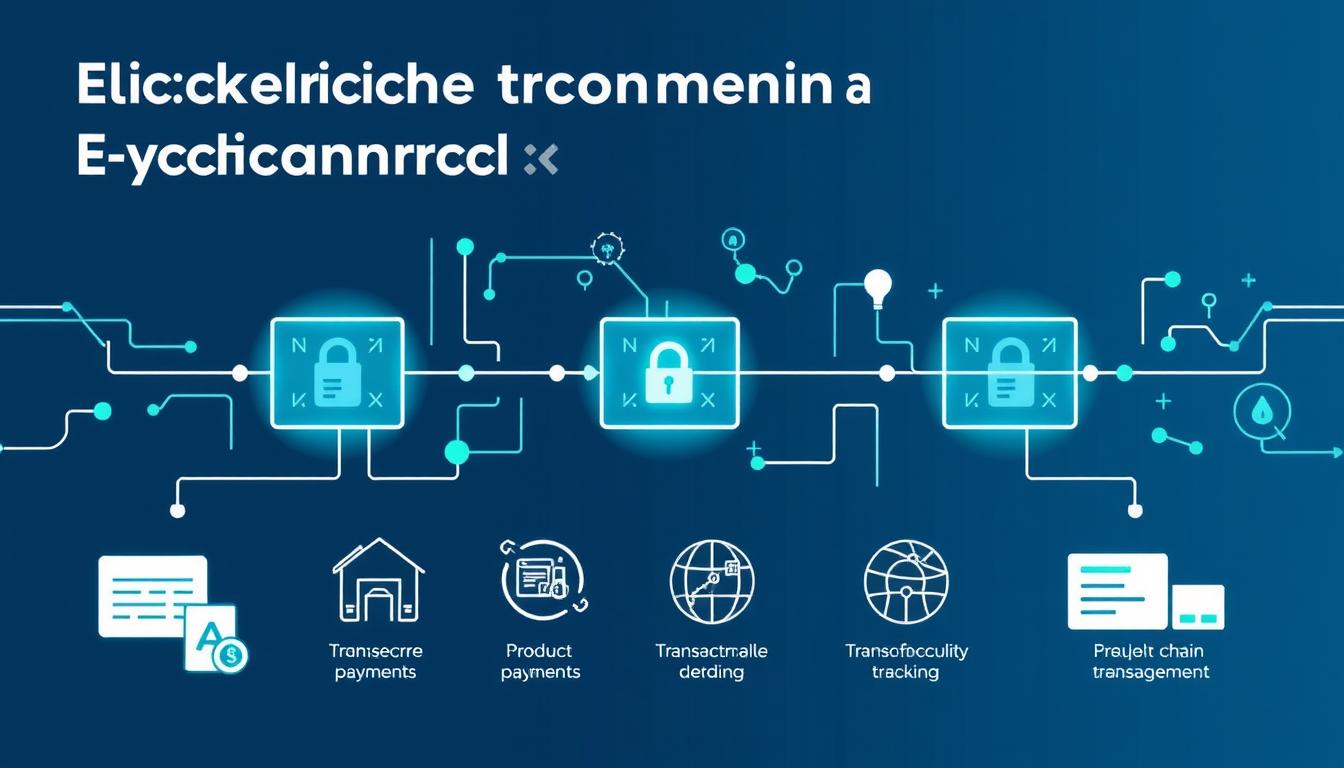
As online shopping continues to grow, so do concerns about data security, fraud, and trust between buyers and sellers. Blockchain technology will play a crucial role in addressing these challenges by 2025.
According to Statista, the global blockchain technology market will skyrocket from $17 billion in 2023 to over $943 billion by 2032. This rapid adoption across industries, including e-commerce, signals the technology's transformative potential.
Blockchain Applications in E-commerce
- Secure payment processing without intermediaries, reducing transaction fees
- Supply chain tracking that provides complete transparency from manufacturer to consumer
- Product authenticity verification to combat counterfeit goods
- Smart contracts that automate fulfillment processes and dispute resolution
- Decentralized customer data management that enhances privacy while maintaining personalization
With blockchain, shoppers can verify product authenticity, track orders in real-time, and protect their personal data—creating a safer, more trustworthy e-commerce experience. As businesses prioritize data privacy and security, blockchain will become essential for maintaining consumer confidence in online transactions.
Flexible Payment Options: Closing the Sale
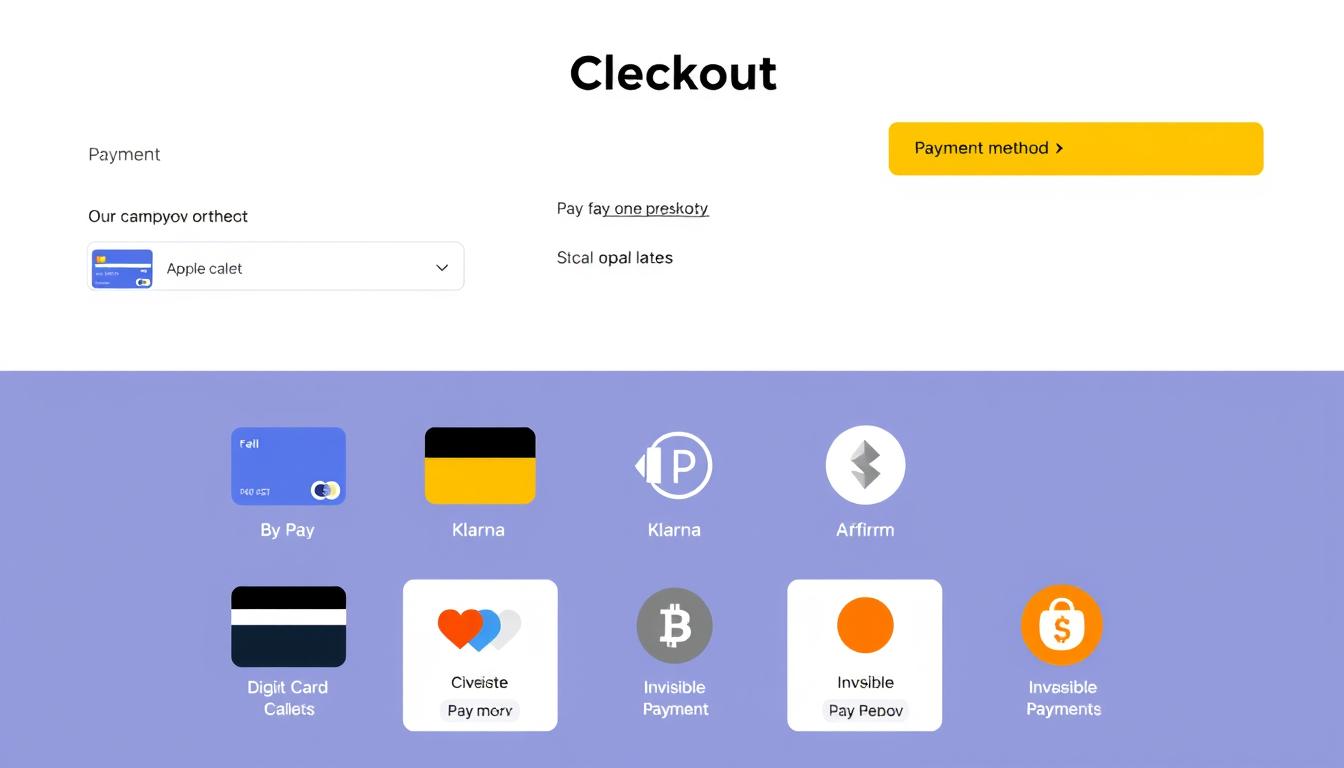
By 2025, the checkout experience will be a critical differentiator for e-commerce businesses. Even minor friction during this process can turn a potential sale into a lost customer. Research shows that 13% of customers abandon their carts if they don't see enough payment options available.
The Rise of Invisible Payments
As the e-commerce experience becomes more seamless, "invisible payments" will become increasingly common. These transactions occur without any visible interaction between the customer and the payment system, creating a frictionless shopping experience.
Technologies like one-click checkout, biometric authentication, and stored payment credentials will make the payment process nearly instantaneous, reducing cart abandonment and increasing conversion rates.
Buy Now, Pay Later Continues to Grow
Buy now, pay later (BNPL) options will continue to gain popularity, with half of millennial and Gen X consumers having used some form of short-term financing in recent years. By partnering with providers such as Klarna, Sezzle, and Affirm, retailers can offer flexible payment options that increase conversion rates and average order values.
However, businesses must implement these options responsibly, as BNPL users are more likely to experience financial stress. The most successful retailers will strike a balance between offering payment flexibility and promoting responsible spending.
AI-Driven Supply Chains: Reducing Volatility
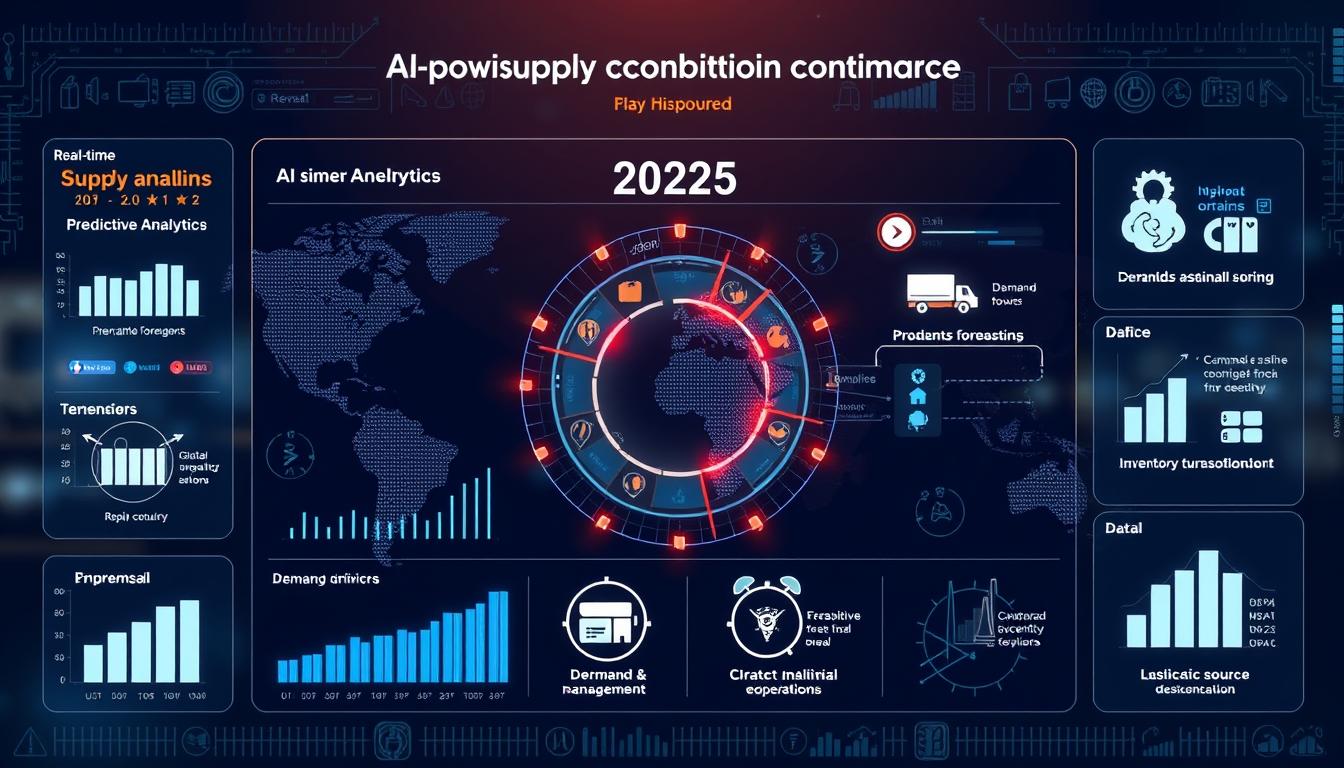
Global conflicts and extreme weather events due to climate change have highlighted the need for more resilient supply chains. By 2025, AI-driven supply chain management will be essential for e-commerce businesses to maintain operations during disruptions and meet customer expectations for fast, reliable delivery.
Digital Twins and Predictive Analytics
Advanced AI systems will create digital twins of entire supply chains, allowing businesses to simulate scenarios and identify potential disruptions before they occur. These virtual replicas will enable proactive decision-making and continuous optimization of logistics networks.
Predictive analytics will forecast demand with unprecedented accuracy, reducing excess inventory while ensuring product availability. This will be particularly valuable for managing seasonal fluctuations and responding to unexpected market changes.
Transparency and Sustainability
While only 34% of consumers want companies to publish their sustainability certifications, half of global consumers say they trust companies that reveal their sourcing and production methods. AI-powered supply chains will provide the data necessary for this transparency, tracking products from raw materials to delivery.
As Sudip Mazumder, Senior Vice President at Publicis Sapient, notes: "From biodegradable packaging to resale platforms to carbon offsetting, retailers have a lot of sustainability strategies to choose from. But what differentiates retailers that are gaining the advantage with consumers and investors is transparency and accountability, which comes from auditing and accurate data."
Mobile Commerce: Shopping on the Move
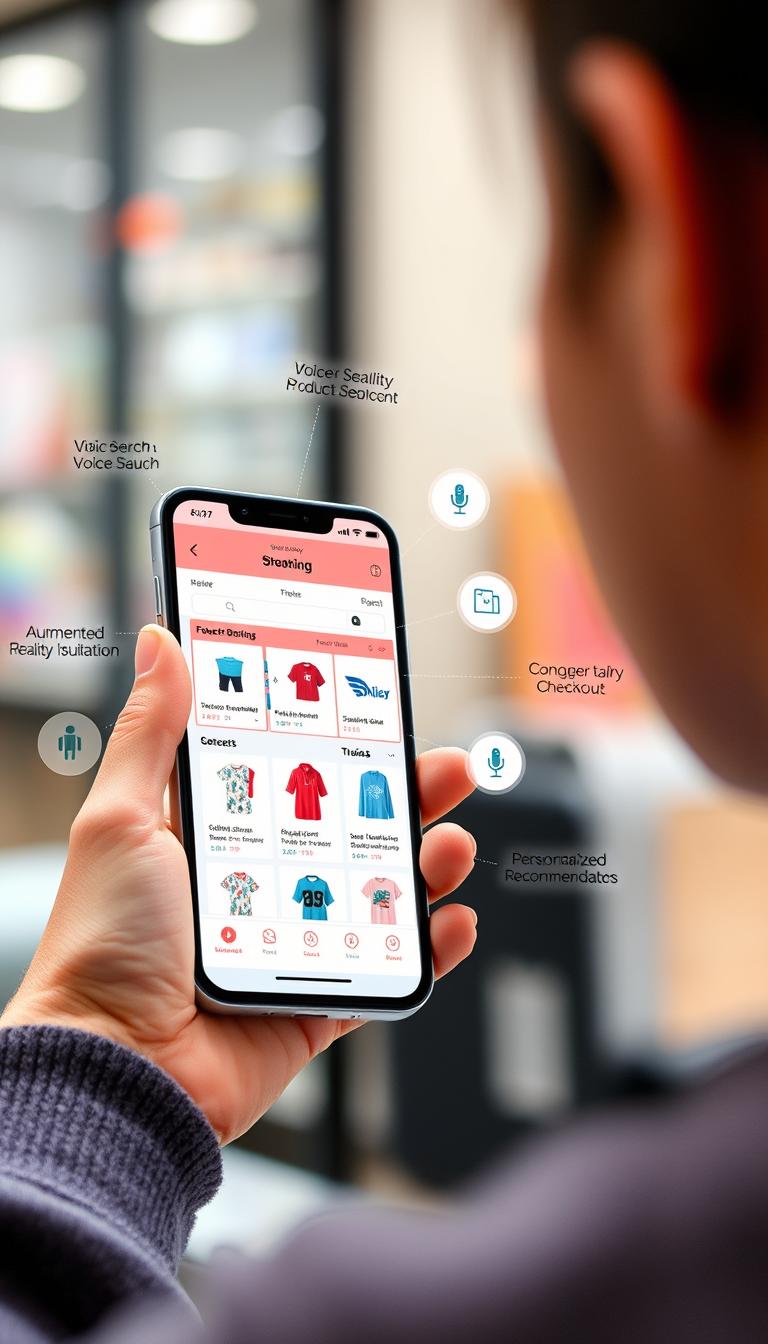
The shift toward mobile shopping will continue to accelerate, with mobile commerce expected to account for 62% of all e-commerce by 2027. This trend reflects the increasing integration of smartphones into daily life and the growing preference for on-the-go shopping experiences.
Voice Search and Mobile-First Design
With 75% of US households projected to own a smart speaker by 2025, voice search will become a standard feature in e-commerce. Consumers will increasingly use voice commands to search for products, make purchases, and track orders, creating a hands-free shopping experience.
E-commerce businesses must optimize their sites for voice search and ensure their platforms are fully responsive on mobile devices. This includes implementing one-click ordering, streamlined checkout processes, and other mobile-friendly features that support on-the-go shopping.
App-Based Shopping Experiences
While mobile websites will remain important, app-based shopping experiences will offer superior personalization and engagement. By 2025, e-commerce apps will leverage device capabilities like cameras (for visual search), location services (for localized offers), and biometric authentication (for secure payments).
Successful mobile commerce strategies will focus on creating seamless omnichannel experiences that allow customers to transition between devices without losing their place in the shopping journey.
Composable Commerce: Driving Digital Innovation
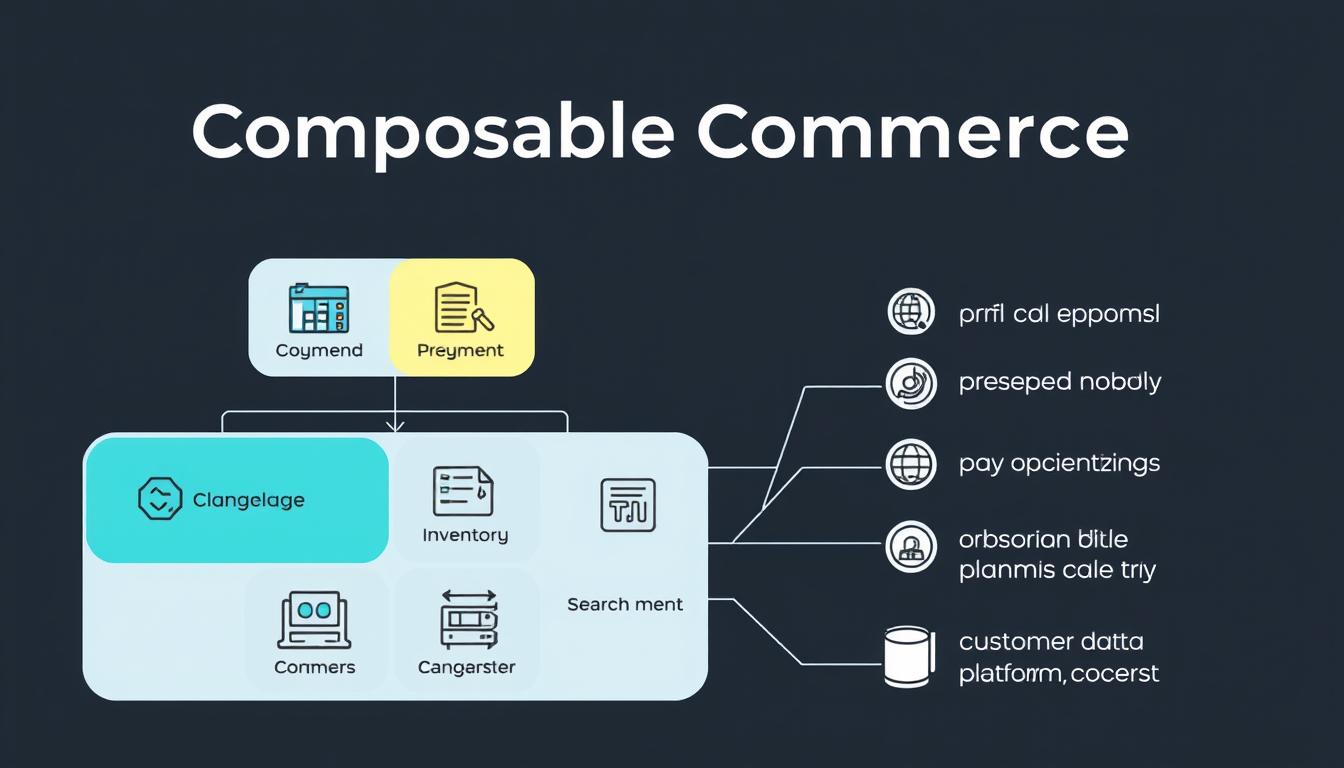
As e-commerce technology evolves, businesses need flexible systems that can adapt quickly to changing market conditions and customer expectations. Composable commerce—the approach of assembling modular business capabilities to create custom technology stacks—will become the dominant architecture for e-commerce platforms by 2025.
Benefits of Composable Architecture
- Flexibility to select best-in-breed vendors for each component of your tech stack
- Ability to quickly adapt to new technologies and market trends
- Reduced technical debt compared to monolithic platforms
- Faster time-to-market for new features and capabilities
- Improved performance and scalability
Rather than relying on one vendor for all business requirements, composable commerce allows organizations to choose specialized solutions that best meet their specific needs. This approach enables businesses to create robust, functional technology stacks that can evolve over time without complete rebuilds.
By 2025, composable commerce will be the standard for enterprise businesses looking to maintain competitive advantage in a rapidly changing digital landscape.
Sustainability: From Buzzword to Business Imperative
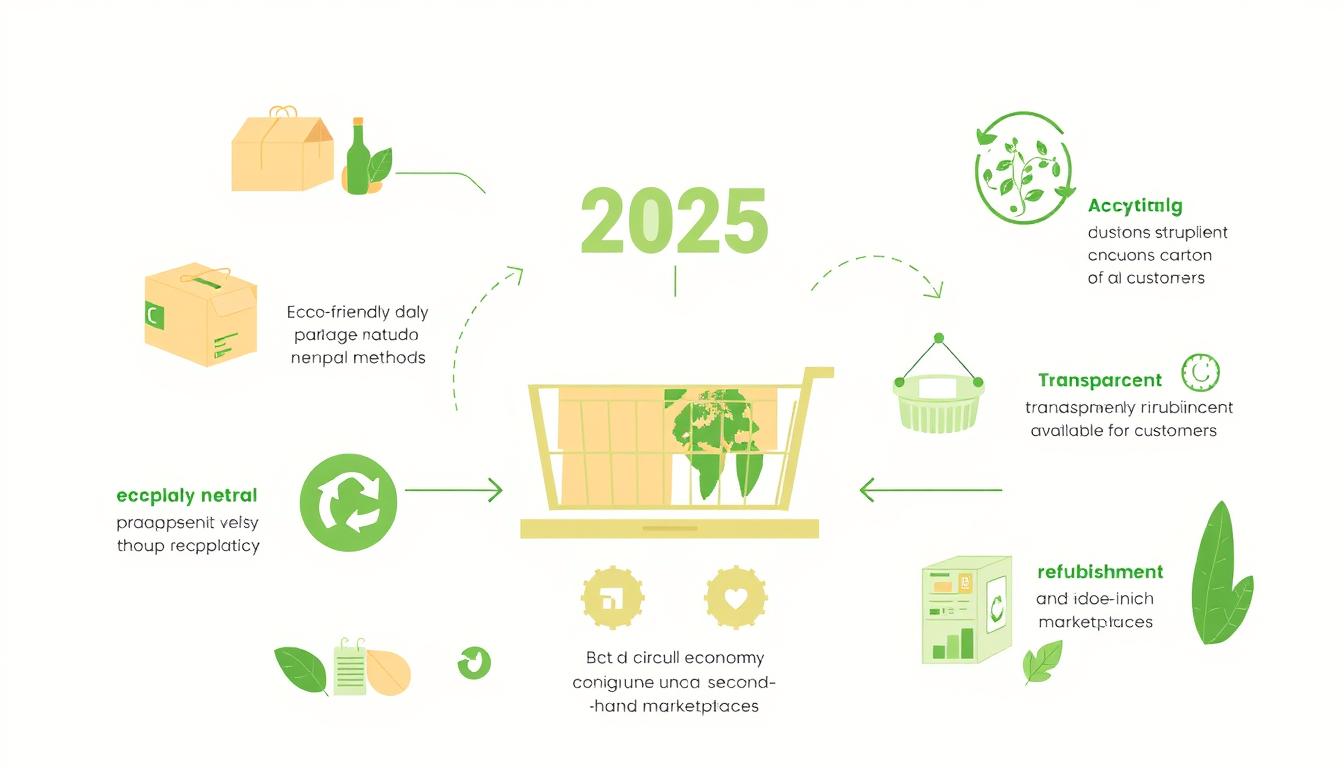
For today's online shoppers, sustainability is no longer just a nice-to-have feature. According to a recent study by PwC, more than 70% of shoppers said they would be willing to pay more for sustainably produced goods. By 2025, sustainability will be a core component of e-commerce strategy rather than a marketing tactic.
Gen Z and Millennial Influence
Younger shoppers are increasingly favoring brands that prioritize ethical and eco-friendly practices. A study by Drapers and BigCommerce found that 57% of Gen Z and Millennials say sustainability is important when shopping for clothes, accessories, or shoes—up from 47% in 2022.
This shift in purchasing decisions reflects a growing trend where consumers increasingly consider the environmental impact of their buys, influencing their loyalty and overall brand perception.
Circular Economy and Secondhand Marketplaces
The "subscription economy" is projected to grow to $1.5 trillion by 2025, according to The Washington Post. This includes not only traditional subscription services but also circular economy models like clothing rental, product refurbishment, and secondhand marketplaces.
With cost-of-living increases and sustainable purchasing habits on the rise, secondhand marketplaces, rental platforms, and resale will accelerate more than ever before. Retailers that can automate authenticity verification and condition assessment using AI will create cost savings and generate a competitive advantage in this growing market.
Global Expansion: Breaking Down Borders

E-commerce is increasingly borderless, with international sales representing a significant growth opportunity for online retailers. By 2025, cross-border e-commerce will account for a larger share of total online sales as businesses expand into new markets.
Emerging Markets to Watch
Latin America
LATAM will see 22% growth between 2023 and 2026, accumulating more than $700 billion in total combined online retail sales. A growing middle class and increasing disposable income make this region particularly attractive for expansion.
Southeast Asia
The Philippines' e-commerce market is the fastest-growing in the world, with a 24.1% growth in sales in 2023. The country is on track to become an upper-middle-class country by 2025, with more disposable income and consumer spending.
India
India's e-commerce market is projected to reach $111 billion by 2024 and continue to expand to $200 billion by 2026. The country's online retail market was valued at 4,822.8 billion Indian rupees in 2023 and is anticipated to reach 15,159.11 billion rupees by 2028.
Keys to Successful Global Expansion
- Localization of content, currency, and payment methods
- Understanding regional preferences and shopping behaviors
- Navigating cross-border logistics and regulatory requirements
- Building trust through transparent policies and excellent customer service
- Adapting marketing strategies to local cultural contexts
With tools like Shopify Markets, businesses can easily handle localization, regulatory requirements, and international payment methods in one place, making global expansion more accessible than ever before.
B2B E-commerce: Modernized Shopping Experiences

The days of cold calling, offline marketing activities, and paper-based transactions in B2B commerce are fading. By 2025, B2B buyers will expect the same seamless digital experiences they enjoy as consumers, driving significant changes in how businesses sell to other businesses.
Worldwide, B2B e-commerce is anticipated to reach $36 trillion by 2026, dwarfing the B2C market. This massive growth reflects the digital transformation of traditionally relationship-based business transactions.
Key Features of Modern B2B E-commerce
- Customer portals with personalized pricing and product catalogs
- Self-service ordering and reordering capabilities
- Custom shipping rates and delivery options
- Integration with procurement systems and ERP platforms
- Digital tools for account management and relationship building
B2B e-commerce platforms will increasingly leverage AI for personalized recommendations, predictive ordering, and streamlined approval workflows. These capabilities will reduce friction in the purchasing process while maintaining the complex business rules that govern B2B transactions.
How to Evaluate Which Trends Are Right for Your Business

With so many emerging trends and technologies, it can be challenging to determine which ones are worth investing in for your specific business. Here's a framework for evaluating e-commerce trends and making informed decisions about which to adopt.
1. Understand Your Customer Base
Start by analyzing your customer data to understand their preferences, pain points, and behaviors. Use digital tools and analytics platforms like Google Analytics, social media insights, and CRM systems to gather data on customer interactions and buying patterns.
Conduct customer surveys and gather feedback to get direct input on what features and capabilities would improve their shopping experience. This data-driven approach ensures that you invest in trends that align with your customers' needs and preferences.
2. Assess Competitive Landscape
Analyze your competitors to identify what trends they've adopted and how those implementations have performed. Pay attention to their strategies, product offerings, and marketing tactics to identify what's working and what's not in your specific market segment.
This competitive analysis can help you avoid costly mistakes and identify opportunities to differentiate your business through strategic technology adoption.
3. Calculate ROI and Implementation Costs
Before investing in a new trend, carefully consider the potential costs and resources required for implementation, including technology, training, and marketing expenses. Assess whether the trend aligns with your business goals and if the expected ROI justifies the investment.
Remember that being an early adopter of certain technologies can provide a competitive advantage, but it also comes with higher risks and costs. Sometimes, a fast-follower approach allows you to learn from others' mistakes while still capitalizing on emerging trends.
Preparing Your Business for E-commerce in 2025

The e-commerce landscape is evolving faster than ever, driven by emerging technologies, shifting consumer expectations, and new ways to shop and engage with brands. Success in this dynamic environment requires more than just keeping up—it demands strategic adaptation and forward thinking.
To prepare your business for e-commerce in 2025:
- Invest in AI capabilities that enhance personalization and operational efficiency
- Explore immersive technologies like AR and VR to create engaging shopping experiences
- Implement blockchain solutions for improved security and supply chain transparency
- Optimize for mobile commerce and voice search
- Expand payment options to include flexible financing and "invisible" payments
- Consider composable commerce architecture for greater agility
- Integrate sustainability into your business model and messaging
- Develop strategies for global expansion, particularly in high-growth markets
By leveraging data-driven insights, adopting new technologies strategically, and prioritizing seamless customer experiences, your business can stay ahead of the curve and thrive in the competitive online marketplace of 2025.
Frequently Asked Questions About E-commerce in 2025
How big will the global e-commerce market be in 2025?
The global e-commerce market is expected to total $6.4 trillion by 2025, up from $4.1 trillion in 2024. This represents a significant portion of total retail sales, with online shopping projected to account for 23% of all retail by 2027.
Which technologies will have the biggest impact on e-commerce by 2025?
Artificial intelligence, augmented reality, blockchain, and voice technology are expected to have the most transformative impact on e-commerce by 2025. These technologies will enhance personalization, create immersive shopping experiences, improve security, and make online shopping more convenient and accessible.
How will consumer expectations change by 2025?
Consumers will expect hyper-personalized shopping experiences, faster deliveries (same-day or next-day), more flexible payment options, greater transparency about product sourcing and environmental impact, and seamless omnichannel experiences that connect online and offline shopping journeys.
What regions will see the fastest e-commerce growth by 2025?
Latin America, Southeast Asia (particularly the Philippines), and India are projected to see the fastest e-commerce growth through 2025. These regions benefit from growing middle classes, increasing smartphone adoption, improving digital infrastructure, and government initiatives supporting digital commerce.
How can small businesses compete in the e-commerce landscape of 2025?
Small businesses can compete by focusing on niche markets, leveraging marketplace platforms, adopting accessible AI tools for personalization, emphasizing authentic brand storytelling, and creating community around their products. Cloud-based e-commerce platforms will make advanced technologies more accessible to businesses of all sizes.
Get Your AI Implementation Roadmap
Discover how to integrate AI-powered personalization into your e-commerce business with our step-by-step guide. Learn which AI solutions deliver the highest ROI and how to implement them without disrupting your current operations.
Download Free GuideMaster Social Commerce Strategy
Get our comprehensive playbook for building an effective social commerce presence across multiple platforms. Learn how to leverage livestream shopping, influencer partnerships, and user-generated content to drive sales.
Download Social Commerce PlaybookPrepare Your Business for 2025
Schedule a consultation with our e-commerce experts to assess your readiness for the future of online retail. We'll provide a personalized roadmap for implementing the technologies and strategies that will keep you competitive in 2025 and beyond.
Request Free ConsultationGet Your E-commerce Technology Roadmap for 2025
Our comprehensive guide helps you prioritize technology investments based on your business model, target market, and growth goals. Includes implementation timelines, budget considerations, and ROI calculations.
Download Free Roadmap
Ready to Future-Proof Your E-commerce Business?
Our team of e-commerce experts can help you develop a customized strategy for implementing the technologies and approaches that will position your business for success in 2025 and beyond.
Schedule a Strategy Session
Social Commerce: Where Shopping Meets Social Media
The line between social media and e-commerce will continue to blur by 2025, with social platforms becoming primary shopping destinations rather than just marketing channels. This shift represents a fundamental change in how consumers discover and purchase products online.
The global social commerce market is projected to reach $1.2 trillion by 2025, according to recent data. This explosive growth is driven by platforms like Instagram, TikTok, and Facebook, which have evolved from social networks into robust shopping ecosystems.
Livestream Shopping Takes Center Stage
Livestream shopping, already a dominant force in China, will become mainstream globally by 2025. US livestreaming e-commerce sales reached $50 billion in 2023 and are projected to grow to $68 billion by 2026.
This interactive format combines entertainment, education, and shopping, allowing viewers to ask questions, see products demonstrated in real-time, and make purchases without leaving the stream. Brands will increasingly host interactive product demos, exclusive drops, and influencer-led shopping events that drive engagement and sales.
Word-of-Mouth Marketing in the Digital Age
Authenticity will remain paramount for online shoppers in 2025, particularly among younger generations. As brands saturate social media with sponsored content, consumers will increasingly seek out "unsponsored" product reviews and recommendations from trusted sources.
According to a global survey, 30% of consumers report recommending their favorite brands to friends and family as one of the top ways they show loyalty. Retailers that seamlessly integrate user-generated content into their e-commerce channels will become preferred shopping destinations for discerning consumers.